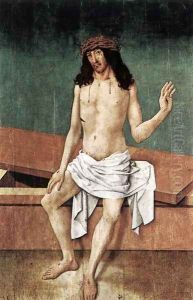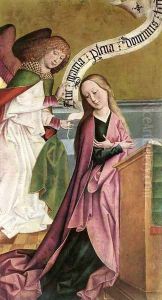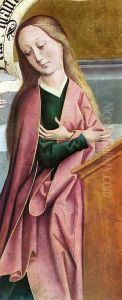Rueland the Elder Frueauf Paintings
Rueland Frueauf the Elder was a prominent late Gothic painter active in the region that today encompasses Austria and parts of Germany during the late 15th century. Born around 1440, little is known about his early life, including his exact birthplace, though it is believed he may have originated from Passau or its vicinity. What distinguishes Rueland Frueauf the Elder in the annals of art history is his contribution to the development of landscape painting within the context of religious works, as well as his intricate attention to detail and vivid use of color.
Frueauf the Elder's career is primarily documented in the city of Passau, where he was a leading figure in the local art scene. By the 1470s, he had established himself as a master painter, and his workshop began to receive commissions for altarpieces and other religious artworks from churches and monasteries across the region. One of his most celebrated works is the altarpiece for St. Wolfgang's Church in Mondsee (1481), which showcases his skill in depicting narrative scenes with a deep sense of spatial awareness and a rich, vibrant palette.
Despite the scarcity of personal details about his life, Frueauf the Elder's legacy is maintained through the quality and quantity of his surviving works. His style is characterized by a meticulous approach to detail, both in human figures and in the natural landscape, which was somewhat innovative for his time. He also displayed a keen ability to convey complex theological themes through his artwork, making his pieces not only visually stunning but also rich in symbolic meaning.
Rueland Frueauf the Elder passed away around 1507, leaving behind a body of work that would influence the next generation of painters in the region, including his son, Rueland Frueauf the Younger, who continued his father's artistic tradition. Today, Frueauf the Elder is remembered as a master of late Gothic art, whose works contribute significantly to our understanding of the period's artistic achievements and its evolving aesthetic sensibilities.


